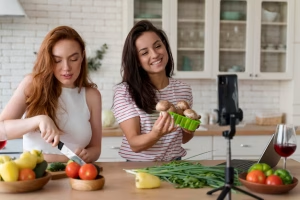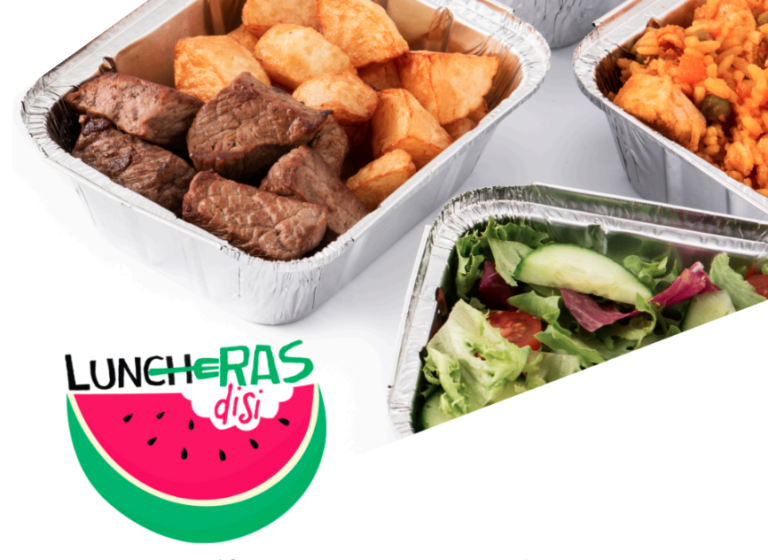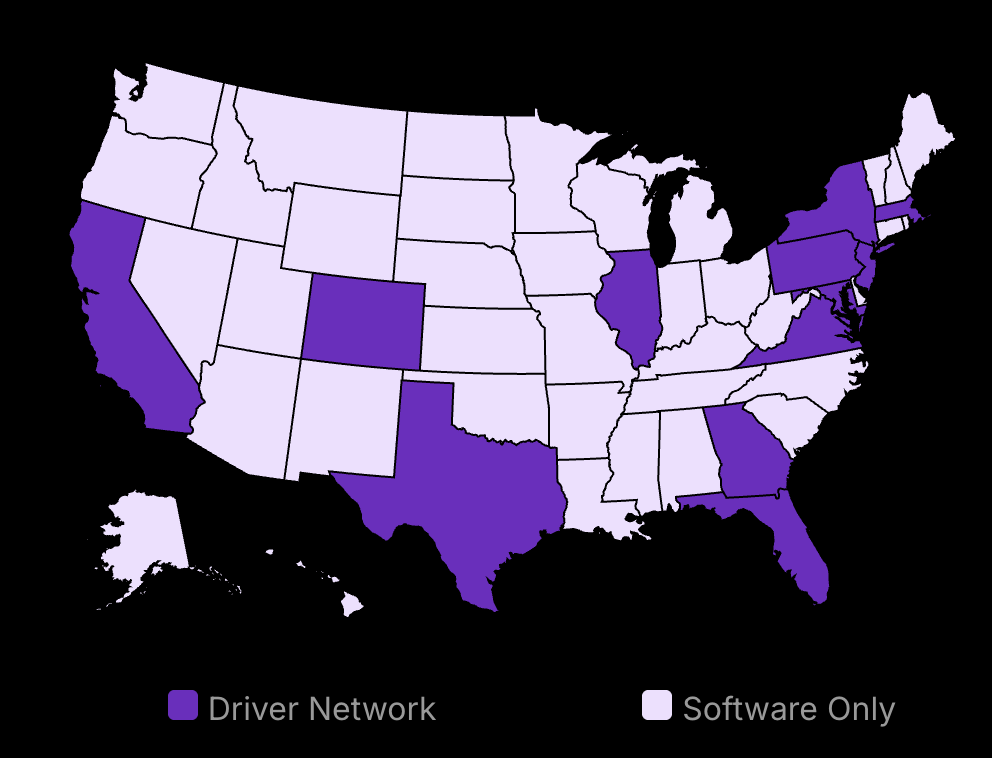Food influencers affect restaurant success through three main methods: social media posts, paid partnerships, and trend creation. With millions of followers, these best food influencers shape dining choices by showcasing delicious food, tasty recipes, and behind-the-scenes looks at top restaurants. Their reach extends from Instagram to YouTube channels, where entertaining videos and cooking videos captivate food enthusiasts and inspire them to explore new flavors and experiences.
Let’s look at how these influencers shape what we eat, where we spend our money, and why restaurants now invest heavily in influencer partnerships. Whether attending food festivals, collaborating with private chefs, or featuring culinary creations from the Momofuku Restaurant Group and other top establishments, these influencers set the pace for emerging food trends. They highlight culinary events, explore diverse cooking styles, and share culinary tips that inspire both home cooks and professional chefs.
This analysis comes from our interviews with restaurant owners and top food influencers, including food content creators, recipe developers, and food photographers. These experts not only create fun recipes, unique recipes, and simple recipes but also promote real food, plant-based diets, and healthy eating. From Italian cuisine to vegan lifestyle choices, their impact spans the culinary world, influencing both food business strategies and consumer preferences.
With an emphasis on food products, cookbooks, and food network collaborations, influencers leverage their Instagram accounts and Instagram bios to share insights, food facts, and health tips. Icons like David Chang and other industry leaders continue to drive culinary scene innovations, making influencer marketing an essential strategy for restaurants aiming to create interesting, taste great experiences.
How Food Influencers Impact Dining Trends
Food influencers dictate what’s popular on social media. In the ever-evolving landscape of digital marketing, SMS marketing has emerged as a powerful tool for engaging customers directly. Restaurants can enhance their outreach strategies by incorporating SMS marketing to provide timely updates, special promotions, and personalized offers to their clientele. This approach not only fosters customer loyalty but also creates an immediate connection that gets diners excited about upcoming events and menu items. To learn more about effective strategies for SMS marketing, check out this insightful post on how to engage customers through SMS.
They change what restaurants serve.
They make people think differently about food.
Food Influencers Create Trends Through Social Media Platforms
Food influencers are often at the forefront of dining trends. They create and spread these trends using platforms like Instagram and TikTok. The visual nature of these platforms is ideal for showcasing playful and vibrant food presentations. The hashtag #food is frequently seen.
Social Media Influence on Dining Choices: 50% of diners claim that social media influences their restaurant choices.
Influencers use their creativity, as well as storytelling, to craft appealing content. These visually engaging posts capture attention, creating a ripple effect across the platform. People are more likely to try new food items, adding them to their culinary repertoire after seeing influencers feature them. Different cuisines, unique ingredients, and experimental dishes often gain traction because influencers introduce them.
TikTok's Impact on Dining: 55% of users visit restaurants after discovering them on TikTok.
Food influencers are particularly influential among younger demographics.
Influence on Restaurant Menus and Dining Experiences
Food influencers’ tastes often set the stage for what diners expect. As they promote certain items or styles, it shapes the restaurant scene. Restaurants might tweak their menus to reflect what’s trending on social media, ensuring they catch the eye of potential diners.
Restaurants Embracing Social Media: 82% of restaurants in the U.S. use social media as their main marketing and advertising tool.
Restaurants increasingly include influencer-inspired items like plant-based dishes, global fusion selections, or artisanal creations. This sometimes involves substantial changes to their offerings. Michelin-starred establishments have been known to introduce tasting menus inspired by trendy ingredients.
Menu Changes Driven by Trends: A TikTok trend for cottage cheese-based foods led to a 15.9% rise in sales of the product in the United States in 2023.
Adapting to influencer culture helps restaurants attract younger, more social-media-active customers. It’s not just about what tastes good but what looks appealing in pictures. This shift means capturing diner photos on Instagram becomes almost as important as the meal itself.
Driving Consumer Behavior and Food Industry Changes
Food influencers significantly impact consumer behavior and, subsequently, the broader food industry. Their posts can sway opinions, sparking consumer interest or directing dining choices.
Online Research Before Dining: 90% of consumers actively research restaurants online before dining.
These influencers push boundaries. They often advocate for healthier options, ethical sourcing, and innovative food pairings. Changes they promote result in a growing market for organic products or plant-based alternatives. Driven by these shifts, the food industry adjusts to meet the expectations of informed consumers.
Influencer Marketing Spending: About 15% of companies spend over half a million dollars a year to work with influencers.
While their influence is powerful, it has faced criticism. Some argue that it can lead to unsustainable trends or promote unhealthy eating habits. Businesses and consumers must carefully evaluate trends and their implications.

Save 80% of delivery management time
We handle everything:
- Dedicated operations manager
- Real-time tracking dashboard
- Automated customer notifications
- Urgent issue resolution
Why Do Food Influencers Have Such an Effect?
Food influencers reach millions through social media.
Audiences trust their dining advice.
They build close connections with their followers.
1. Social Media Reach and Engagement
Social media platforms like Instagram and TikTok are powerful tools for food influencers. They amass large audiences, sharing visually captivating content that engages people.
Facebook's Role in Dining Decisions: 72% of customers have used Facebook to make restaurant or retail decisions based on comments and images shared by other users.
Food influencers use engaging visuals. A picture of a gourmet burger with melted cheese attracts instant attention. These images grab people quickly, often leading them to new dining avenues. These platforms allow influencers to reach a wide audience and connect with followers instantly.
2. Authentic Connection with Audiences
Food influencers have a way of connecting with audiences by being relatable and real. When people see influencers trying out a local eatery, they feel like they’re getting a recommendation from a friend. An illustrative example is Naomi, a successful influencer, who shares honest reviews about ethical eateries, thus influencing her followers towards sustainable choices.
Millennials and Social Media Influence: Millennials are 5 times more likely to follow social media accounts in the food industry to find new restaurants.
Audience trust is a crucial factor. People feel a genuine connection and believe in the authenticity of influencers’ recommendations. It’s important. By sharing personal stories or experiences, influencers build a loyal community that values their suggestions, often swaying public dining trends.
Impact of Online Reviews: 88% of social media users rely on online reviews to select restaurants instead of personal recommendations.
User-generated content (UGC) is also key. Followers posting their experiences based on influencers’ suggestions further create a community. It fosters a sense of belonging and builds on the trust established, offering businesses a window to evaluate customer preferences and opinions.
What Actions Can Restaurants Take to Adapt to Food Lovers?
Work with influencers to create buzz and improve offerings.
Strengthen presence on Instagram and TikTok for broader reach.
Leverage online reviews to drive customer decisions.
1. Collaborate with Influencers
To tap into influencer marketing, restaurants need to work hand-in-hand with food influencers. Partnering for events or promotions is a good start. Have influencers participate in exclusive tasting events where they can share real-time reviews with their followers. Their immediate feedback can boost authenticity and trust. Make sure the event aligns with what influencers often promote. Focus on both your strengths and their specialty, and build from there.
Take a strategic approach to influencer feedback. After events, ask for honest opinions on your dishes. Use this feedback to refine menu offerings. It helps to know what appeals to their audience. For example, if influencers highlight a particular dish, consider making it a staple. Tracking this data is vital for seeing which elements are successful. Collect insights over time and adjust strategies accordingly.
Catering to an influencer’s demographic can elevate your status. Study their audience’s preferences, using details like age groups, food interests, and geographic location. Align your menu and events with audiences that resonate well with influencers. If an influencer’s audience loves plant-based options, ensure these are strongly represented. Craft the marketing and dining experience to fit these specific demographics for optimal engagement.
Rethink Strategic Partnerships
Consistently review influencer partnerships. Some collaborations may be more meaningful for specific campaigns. If data shows a boost in reservations or social media engagement, consider forming long-term relationships. Leverage influencer expertise to stay ahead in trend-setting.
2. Enhance Online Presence
Restaurants should amplify their online visibility, especially on platforms like Instagram and TikTok. Start by posting high-quality, engaging content showcasing your restaurant’s unique offerings. This might involve publicity pieces such as behind-the-scenes videos, chef spotlights, or creative dish presentations. Engage with these platforms frequently with regular posts and offerings.
Social Media's Role in Restaurant Marketing: 72% of consumers specifically utilize restaurants' social media for information.
Highlight social media-influenced customer reviews prominently. Display positive reviews effectively on your website and across social platforms. Creating graphics or video snippets from these reviews can capture your restaurant’s allure. Take advantage of user-generated content (UGC) by encouraging diners to share their experiences. UGC builds credibility and gives potential customers a real-world sense of dining with you.
Staying relevant online requires consistent interaction. Allocate time each week for online engagement. Responding to customer comments and messages is crucial. Host live Q&A sessions, or run polls and contests to gauge diner preferences. This engagement and interaction make your presence known and increase your reach by triggering social media algorithms.
Keeping the Content Fresh
Content must be changing regularly. Update your digital menu or showcase special events and deals. Ensure that each update aligns with current trends. Keeping content fresh and appealing is key to remaining competitive.
When something unexpected happens, such as negative reviews or a social media misstep, promptly address issues. Offer genuine solutions or compensations to affected customers. Transparency and responsiveness help rebuild trust. Take the insights and adapt quickly. When life feels overwhelming in managing a restaurant, keep the stress down by simplifying processes using tools like scheduling software to manage reservations and customer inquiries more efficiently. Being organized helps balance a bustling schedule.
How to Sustain the Influence of Food Trends?
Consistency and creativity are keys to keeping trends alive.
Engage customers with innovative dining experiences.
Use feedback to avoid repeating past errors.
1. Continuous Innovation
Keep menus fresh with regular updates.
Monitor current trends and customer preferences.
Train staff to deliver exceptional experiences.
Innovation is not just about new dishes. It’s about integrating insights from customer feedback and industry trends. Continuous menu updates ensure your offerings remain relevant. This kind of dynamism requires constant market research and a keen understanding of changing culinary preferences. It’s essential to engage staff in training programs that focus on delivering not just excellent food, but great dining experiences. Books like “The Lean Startup” by Eric Ries might offer insights into continuously reshaping offerings based on real-time feedback.
Understanding why mistakes happen and learning from them lets you improve. It makes you less likely to face the same issues again. For example, a lack of customer engagement might signal a gap in understanding what diners want. Regularly updating the menu and incorporating feedback becomes a proactive strategy in avoiding repeated mistakes and maintaining influence.
2. Create Unique Dining Experiences
Offer themed events or exclusive tasting sessions.
Consider interactive dining options that encourage participation.
Utilize customer feedback for ongoing improvement.
Creating unique dining experiences can set a restaurant apart. Themed events or exclusive tasting sessions cater directly to specific trends while inviting diners to be part of something special. This encourages participation and creates a memorable moment beyond just food consumption. Interactive dining allows guests to connect more deeply with what they eat, turning meals into stories.
Actively seeking and using customer feedback is another fundamental way to maintain a competitive edge. For example, if an interactive dining night receives positive remarks, doubling down on that format could be beneficial. Look into books like “The Experience Economy” by B. Joseph Pine to explore how companies can turn memorable experiences into opportunities for sustained growth.
3. Foster Sustainability Practices
Incorporate local and seasonal ingredients.
Reduce waste by efficient stock management.
Engage in community-supported agriculture (CSA).
Sustainability is becoming increasingly important. As one expert noted, “The future of food is being shaped by sustainability.” It starts with using local, seasonal ingredients. This reduces carbon footprints and supports local economies. Restaurants that use local produce often find they can offer fresher and more flavorful dishes. Moreover, efficient stock management reduces waste—a triple win for the economy, environment, and community.
Engaging in CSA programs can deepen community connections. By purchasing directly from local sources, restaurants support a sustainable cycle that benefits all. For more on sustainable practices, “The Omnivore’s Dilemma” by Michael Pollan provides valuable insights into making eco-conscious choices in food sourcing.
4. Enhance Social Media Engagement
Leverage platforms like Instagram and TikTok.
Post regularly with high-quality images and videos.
Engage followers with interactive content and live sessions.
Social media remains a massive sphere for influencing dining trends. Platforms like Instagram and TikTok are not just showcases but communities where a restaurant can actively participate and grow. Regular postings of high-quality images and videos keep potential diners intrigued. They highlight the current trends and innovative dishes your restaurant is offering.
Young People and Food Marketing: Young people are exposed to food marketing around 30–189 times per week on social media.
Interactivity, such as live Q&A sessions or cooking tutorials, fosters a connection that goes beyond the restaurant. It turns followers into advocates. Books like “Jab, Jab, Jab, Right Hook” by Gary Vaynerchuk offer deeper insights into creating engaging content and understanding audience engagement patterns across various social platforms.
5. Build a Strong Brand Community
Engage with customers beyond dining experiences.
Cultivate brand loyalty through reward programs.
Encourage user-generated content (UGC).
Building a community around your brand is crucial. This goes past advertising. It means engaging with customers beyond the dining table. Implementing reward programs for regular patrons is one way to cultivate loyalty. UGC can boost this by making diners feel more connected to your brand. Encouraging guests to post their dining experiences creates authentic content.
Applying Food Influence Lessons Elsewhere
Influencer marketing applies to many sectors.
Personal brands build influence like companies.
Societal changes are guided by influencers.
1. Other Industries
When considering how Instagram stars and food influencers with millions of followers have transformed the dining scene, it’s clear that other industries—such as fashion and travel—use similar strategies. These industries leverage influencers to create authentic connections, drive engagement, and shape trends, much like how delicious recipes and cookbooks have fueled the rise of culinary content creators.
The growth is driven by industries recognizing the power of personal branding and genuine storytelling. Fashion brands collaborate with influencers who align with their aesthetic, using their reach to set trends. In the travel sector, influencers shape destination choices and experiences, much like food influencers introduce new cuisines and share recipes that redefine home cooking. Books like “Influencer Marketing Strategy” by Joachimsthaler and “The Art of Social Media” by Guy Kawasaki offer deeper insights into these evolving digital trends.
2. Personal Brand Development
The success of Instagram stars and top food influencers showcases the power of personal branding. Individuals, not just brands, can use influencer strategies to expand their audience and authority. Content creation is key—whether sharing delicious recipes, engaging in storytelling, or consistently interacting with followers.
Aspiring influencers can sharpen their skills with online courses like “Content Marketing Strategy” on Coursera. These courses emphasize strategic storytelling, a crucial aspect of personal branding. As Neal Schaffer highlights, influencer marketing isn’t about paying for positive reviews but about crafting content that truly resonates with a target audience. Whether you’re a food blogger, cookbook author, or content creator in another industry, personal branding is built on authenticity and consistency.
3. Cultural and Social Impacts
Influencers do more than promote products—they shape culture and reflect societal shifts. For example, Instagram stars and YouTube creators influence food trends, encouraging home cooks to try delicious recipes and embrace new culinary experiences. Live streaming has also become a dominant trend, reinforcing real-time engagement and authentic interactions.
Books like “Influence: The Psychology of Persuasion” by Robert Cialdini explore how influencers drive behavioral and cultural changes. Understanding these dynamics allows businesses and individuals to align with evolving consumer values. Whether in the culinary world or beyond, influencer strategies are shaping global priorities, from sustainability and ethical sourcing to digital engagement and audience trust.
Common Questions About Food Bloggers and Influencers
Know the top influencers in 2025.
Discover how food influencers earn.
Learn about authenticity’s role and common challenges.
Who Are the Popular Food Influencers Today?
In 2025, several food influencers stand out for their influence and follower numbers.
Gordon Ramsay holds a massive following. His ability to blend cooking with entertainment keeps his audience hooked.
Cedric Grolet, a skilled pastry chef, boasts followers. His intricate pastry designs differentiate him, appealing to those with a sweet tooth.
Jamie Oliver, with followers, remains a stalwart in promoting home cooking and healthy eating.
Tieghan Gerard of Half Baked Harvest has captured the attention with her creative recipes that offer a hearty and comforting approach.
These established names aren’t the only influencers to watch. Up-and-comers like Olivia Cheng and Daniel Moretti promise fresh perspectives on healthy and gourmet dining, respectively.
How Do Food Influencers Make Money?
Food influencers often combine different revenue streams.
Sponsored Posts: Companies pay influencers to promote their products. This is a common strategy among influencers with large followings.
Subscription Content: Many offer exclusive content to subscribers, creating a steady income stream. This content includes meal plans, recipes, and private cooking tips.
Digital Products and Workshops: Influencers often sell e-books, conduct online classes, or host workshops. Platforms like Patreon support these efforts by facilitating transactions.
Monetization can vary between influencers. Some focus on digital products, while others might prioritize ad revenues. The diversity of income streams requires a balance between commercial interests and maintaining genuine interactions with their audience.
The Role of Authenticity in Food Influencing
Authenticity sets successful food influencers apart. Audiences relate more to content that feels genuine and not overly staged.
Personal Stories: Sharing a personal food journey or struggles with recipes adds authenticity. Authentic influencers build trust, convert followers into loyal fans and readers.
Transparency: Being upfront about paid partnerships maintains credibility. Seasoned influencers display transparency when promoting products ensuring that their audience remains confident in their recommendations.
Behind-the-Scenes Content: Offering an inside look at kitchen failures or successes makes them relatable and breaks the typical polished image often seen in influencer content.
Authentic engagement is crucial. By maintaining a personal touch, food influencers create communities centered on trust and shared interests.
Challenges Faced by Food Influencers
Balancing the demands of a public persona with personal life can be taxing. The challenges they face are varied:
Staying Engaged: As digital platforms evolve, influencers must adapt quickly. Consistently producing fresh and engaging content is a constant challenge.
Public vs. Private Life: Maintaining a public persona can blur personal boundaries, impacting mental health and well-being.
Moving platforms like TikTok and Instagram updates frequently challenge influencers to keep up or risk losing relevance. Influencers must also tackle criticism while responding to concerns professionally.
Conclusion
Food influencers have revolutionized the dining landscape in 2025, influencing restaurant choices, inspiring menu innovations, and fostering communities centered around culinary experiences. Their impact transcends social media metrics, driving tangible shifts in restaurant operations and consumer dining preferences. From viral recipes and food challenges to food photography and engaging food-related videos, they shape how food lovers experience and share their culinary adventures.
Successful restaurants now recognize the pivotal role of food influencers in navigating the intersection of food quality and social media dynamics. By collaborating with top food influencers and Instagram food influencers, eateries can craft compelling dining experiences that resonate beyond mere consumption, fostering a culture of shared culinary exploration. The rise of restaurant reviews by food bloggers and content creators has made food brands more conscious of presentation, taste, and storytelling.
For diners, this evolution translates into informed decision-making and expanded gastronomic horizons. Food influencers introduce diverse cuisines, easy recipes, and delectable desserts that enrich everyday life. They bridge cultural divides through the universal language of food, fostering a global culinary community. Whether highlighting healthy plant-based recipes, fusion cuisine, or gluten-free dishes, they bring attention to food trends that shape the way we eat.
Looking ahead, the symbiotic relationship between food influencers and dining establishments will continue to strengthen. Restaurants embracing influencer partnerships stand to thrive by leveraging their reach while preserving authenticity and culinary excellence. Those slow to adapt risk losing relevance in an increasingly influencer-driven dining landscape where professional chefs, food stylists, and food photographers play a crucial role in shaping mouth-watering dishes worth sharing.
The future of dining extends beyond gastronomic delights—it encompasses creating shareable moments, fostering inclusive communities, and curating unforgettable dining experiences. Food influencers, from cookbook authors to recipe developers, are at the forefront, reshaping how we perceive, savor, and share food in a vibrant world of culinary exploration and innovation.



























